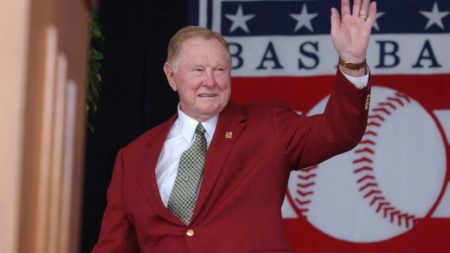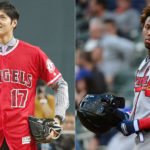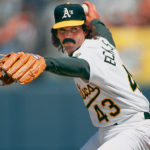How Red Schoendienst Taught Me What a Manager Does
 In July of 1975, I went to my first professional baseball game at Busch Stadium in St. Louis. The recently departed Red Shoendienst was the Cardinals manager that day, meaning he filled out the lineup card, and he made the unpopular decision to pull Al Hrabosky from the game in the ninth inning. With that move, Red Schoendienst taught me about what a manager can do to help his team win ballgames.
In July of 1975, I went to my first professional baseball game at Busch Stadium in St. Louis. The recently departed Red Shoendienst was the Cardinals manager that day, meaning he filled out the lineup card, and he made the unpopular decision to pull Al Hrabosky from the game in the ninth inning. With that move, Red Schoendienst taught me about what a manager can do to help his team win ballgames.
Some context is needed upfront. The Mets’ Tom Seaver was one of the best pitchers of the game in those days, but the Cardinals put up some runs against him that day. A journeyman starter for the Cardinals named Lynn McGlothen outdueled Seaver that day, and he was in line for the win as the Mets came to bat, trailing 5-3 in the top of the ninth.
They didn’t call Al Hrabosky “The Mad Hungarian” for nothing. He had a shtick whereby he would walk off the mound and make the hitter wait until he was ready to throw a pitch. Al had his back to the hitter as he was doing this, and when it was over, he would slam the ball into his glove and pivot to face the batter. It was something out of pro wrestling, before even pro wrestling figured this out.
Even though Al was on the mound and doing his thing, the Mets were able to load the bases with one out in the ninth inning. And the next hitter coming up to the plate was a rising young slugger named Dave Kingman. I’d cheer for him like crazy when he came to the Cubs a few years later, but on that day, I hadn’t yet learned of the Cubs’ existence.
I remember being overwhelmed by the booing of the St. Louis crowd that day, in the heat of what I’m sure was a brutally hot St. Louis day. They had come to see Al do his crazy bit off the mound, and the manager was about to shut it all down. I remember trying to make sense out of why Al was being lifted, when clearly nobody wanted it to happen. I knew next to nothing about baseball, but hearing the home crowd boo their own manager made it feel like something was wrong.
But Red Schoendienst, like any other big-league manager, wasn’t getting paid to give the people what they want. Instead, his job that day was to win games for his team, and the truth was left-handed reliever Al Hrabosky was getting in the way of that outcome. So, out he came, in favor of the right-handed Mike Garman, instead.
The idea that some players threw the ball with their left hand, while others threw with their right—and that it can make a difference to a hitter standing at the plate 60 feet away—would have been revolutionary to the seven-year-old I was on that day. All I knew was the excitement of learning that vendors would come to our seats, bringing peanuts and cold drinks. But Red Schoendienst—after three decades in the game as a manager or a player—knew that lefty/righty matchups can turn a baseball game, especially with the game on the line in the ninth inning.
Dave Kingman’s long, majestic home runs suggested he might hit the ball a long way, but his .235 batting average also suggested that a different result was much more likely. And Garman proved the latter notion to be correct by striking out Kingman to effectively seal the victory. The young kid that I was would rather have seen the Mad Hungarian pitching in that spot, but the wise baseball man that Red Schoendienst undoubtedly was knew exactly what moves to make.
I tip my cap to him today, for having lived such an exemplary baseball life.


























